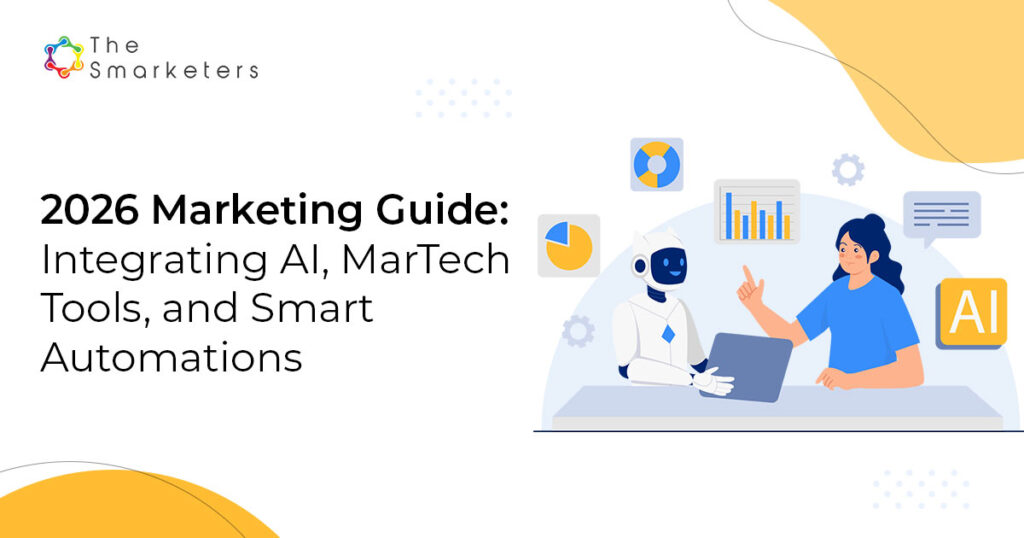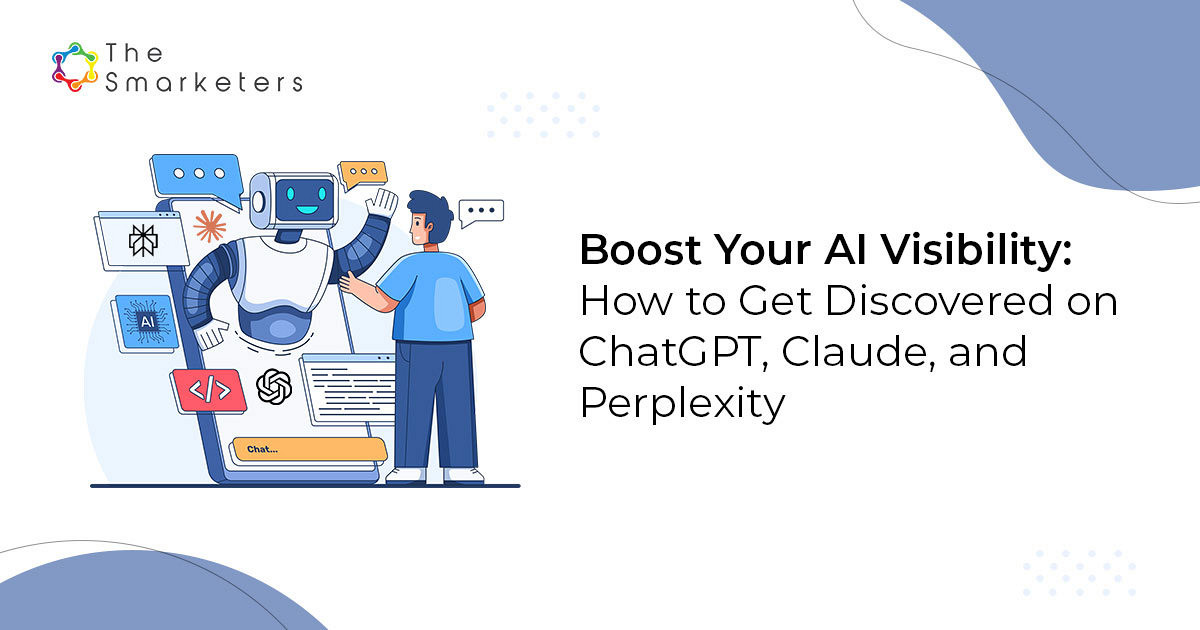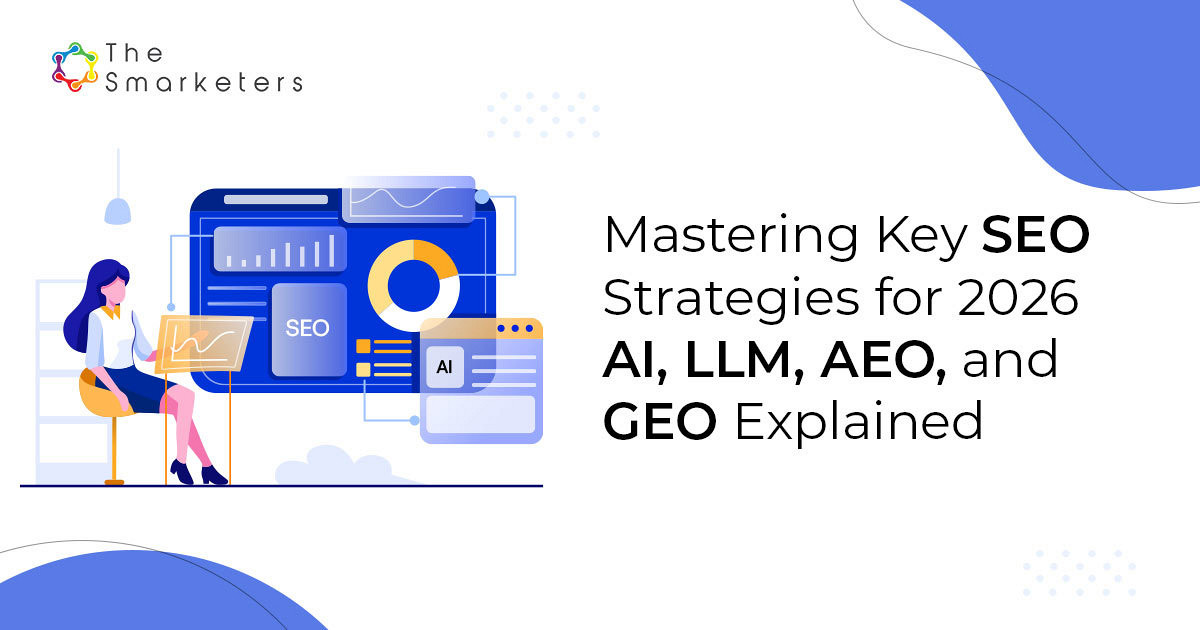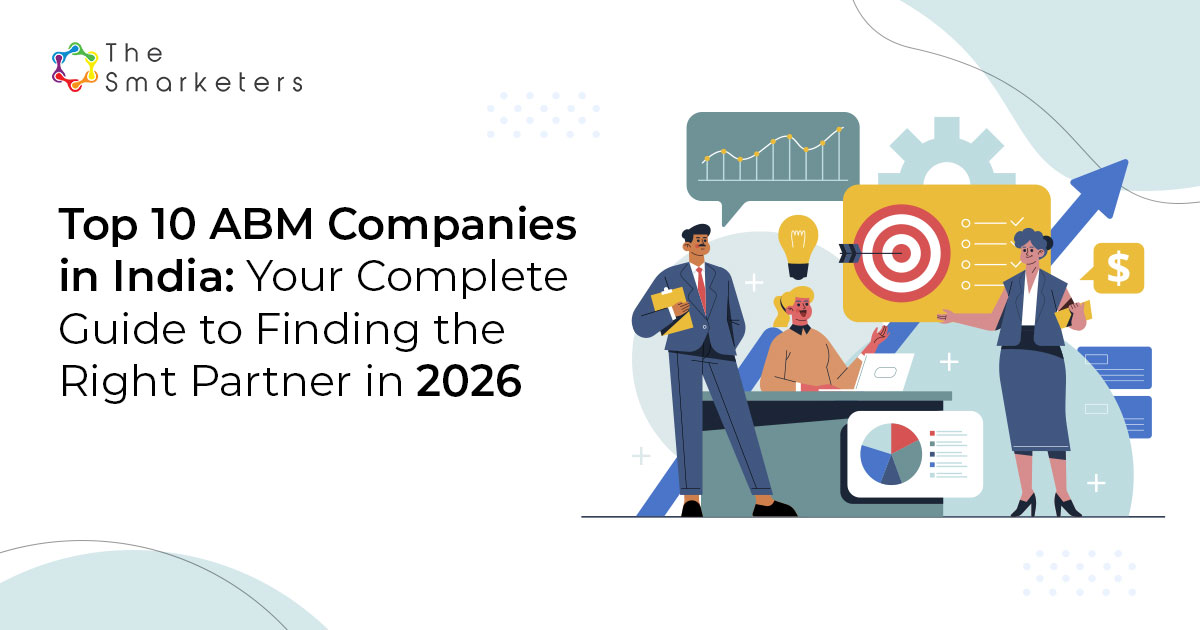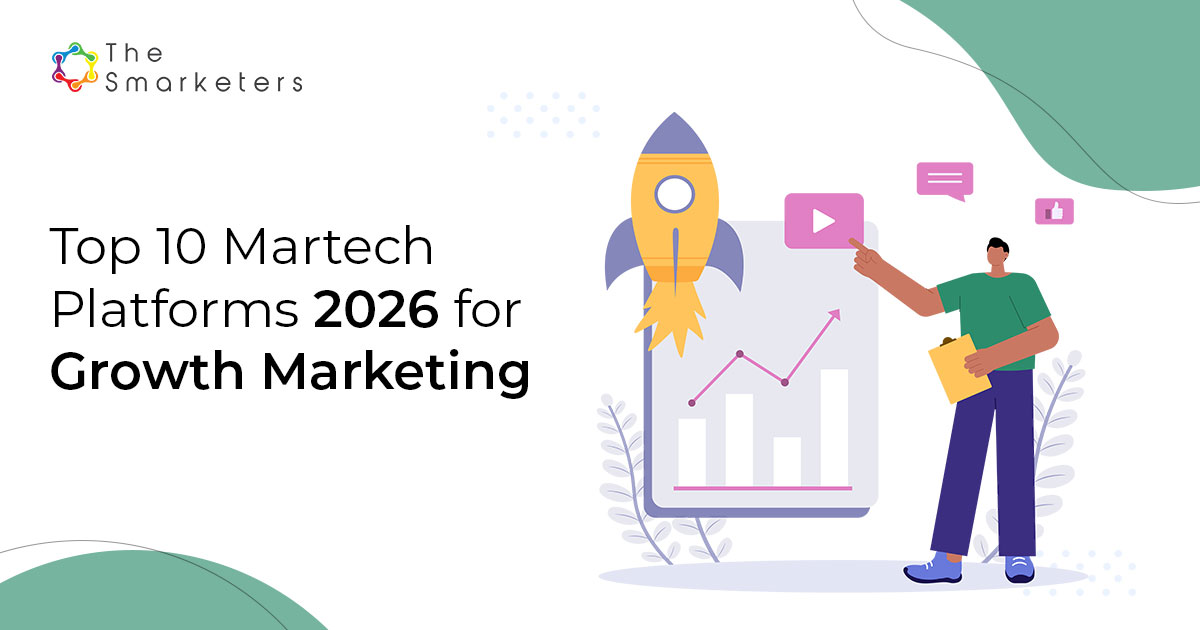Table of Contents
- Top 10 ABM Companies in India: Your Complete Guide to Finding the Right Partner in 2026
- Top 10 Martech Platforms 2026 for Growth Marketing
- The Marketing Evolution: Loop Marketing vs Vibe Marketing vs Traditional Marketing Strategies for Maximum ROI
- Guide: How to find the right ABM agency for your organization?
- Data-Driven Growth: Using AI and Analytics to Optimize SaaS GTM Strategies
The State of B2B Marketing in 2026
The B2B landscape has fundamentally shifted.
Buyers are more empowered, skeptical, and informed than ever. They’re doing deep research before speaking to sales—and they’re using AI to evaluate vendors, compare solutions, and even negotiate pricing.
In tech, nearly 80% of buyers now use GenAI as much as traditional search—compared to 59% in other industries.
Meanwhile, your competitors aren’t experimenting with AI anymore—they’re operationalizing it.
They’re using machine learning to predict which accounts will convert, AI agents to personalize outreach at scale, and automation to shave weeks off their sales cycles.
The question isn’t whether AI will transform B2B marketing. It’s whether you’ll lead that transformation—or be disrupted by it.
The Shift We’re Seeing
Cost pressures. ROI scrutiny. The rise of influencer-led buying committees and AI-powered pricing negotiations.
2026 demands a smarter, validated approach to MarTech investments.
Human expertise is reasserting its value.
Top-performing teams aren’t replacing marketers with AI—they’re amplifying their fundamentals. They’re using intelligent tools to scale creativity, personalization, and decision-making speed.
Why AI Integration Is No Longer Optional
Five years ago, “personalization” meant segmenting by industry or job title. Today, AI can analyze behavior, content patterns, and engagement signals to create unique experiences for thousands of prospects—simultaneously.
But personalization is just the start.
The real advantage is speed and intelligence.
AI-driven platforms like HubSpot, Einstein, and Salesforce turn hours of analysis into minutes of insight. They monitor performance across email, web, social, and reviews—then recommend next steps instantly.
Consider the math:
What took your team an hour now takes five minutes. That’s a 12x efficiency gain. Multiply that across every campaign and optimization cycle, and the performance gap between AI-enabled and manual teams widens fast.
Here’s the uncomfortable truth:
Without these capabilities, companies will struggle to compete.
Smaller regional players may hold ground for now—but growth-driven organizations need AI to scale markets, operations, and outcomes.
The Bottom Line
The winning teams in 2026 aren’t “prompt-engineering” their way to more content.
They’re integrating AI into every layer of marketing—from strategy to execution—and using it to work smarter, not just faster.
What This Guide Will Teach You
Let’s get started
Current Landscape: AI in B2B Marketing Today
AI has moved from the innovation lab to the operating room.
This isn’t about pilots or PoCs anymore—it’s about production, scale, and impact.
Global spending on AI technologies is projected to hit
$630 billion by 2028, growing at a 29% CAGR (2024–2028).
Generative AI is fueling much of that, with corporate spending expected to rise 59% annually, reaching $200 billion by 2028.
- 65% of organizations now use GenAI in at least one function.
- 82% of leaders view it as a core lever for business reinvention.
Back in 2023, McKinsey noted that 75% of GenAI’s total value would come from four functions—two directly in your wheelhouse: marketing & sales and customer operations. (The other two are software engineering and R&D, for context.)
Organizations first used AI to improve efficiency. The turning point came when leaders shifted from “AI for efficiency” to “AI for growth and reinvention.”
Now, AI isn’t just making things faster—it’s unlocking entirely new capabilities.
The Strategic Pivot
High-performing companies report a 4.5% higher cost-efficiency ratio than their peers.
Early GenAI adopters have seen:
2.4x greater productivity
13% cost savings from better operational visibility and capital allocation
Companies leading in AI adoption already outperform peers by 15% in revenue, a gap expected to double by 2026.
AI’s projected global contribution: $7.6–$17.9 trillion by 2038, with the biggest gains going to organizations that focus on people-centric AI—solutions that enhance human creativity, judgment, and strategy.
The message is clear:
If you’re not implementing AI at scale, you’re not just behind—you’re becoming competitively vulnerable.
The gap between AI adopters and laggards isn’t measured in months anymore. It’s measured in market share. This is why "wait and see" is no longer a viable strategy. The data shows that early adopters aren't just incrementally ahead—they're operating in a different performance tier entirely.
Five Trends Shaping the AI-Powered Marketing Landscape
The data proves adoption is accelerating. Here’s how top B2B organizations are actually putting AI to work:
Trend 1: Human-Led Creativity Wins
AI can automate—but it can’t empathize.
Successful brands use AI for insights and efficiency, but rely on human judgment for storytelling and strategy.
Takeaway: Let AI handle patterns. Keep humans in charge of the story.
Trend 2: Data-Driven Personalization at Scale
In 2026, personalization goes beyond names and industries. It’s about tailoring every touchpoint to pain points, journey stages, and company maturity.
Intent data and ABM tools make this scalable across entire markets, not just key accounts.
Takeaway: True personalization is contextual, behavioral, and predictive—not templated.
Trend 3: Thought Leadership Through SEO
Organic visibility remains the most sustainable growth lever. But ranking today means publishing data-rich, expert-driven content that captures complex intent.
Modern SEO is less about keywords, more about authority.
Takeaway: SEO isn’t a technical game anymore—it’s a credibility game.
Trend 4: Long-Term Relationship Marketing
A well-executed B2B marketing is relational, not transactional.
Consistent content, events, and community building turn customers into advocates. AI helps measure relationship health and scale personalization across thousands of accounts.
Takeaway: Optimize for lifetime value, not just conversions.
Trend 5: Traditional Marketing Still Matters
Despite the digital wave, trade shows, in-person events, and PR remain essential. They deliver what AI can’t replicate—human connection.
Offline experiences deepen trust and strengthen your digital strategies.
Takeaway: The future isn’t digital-only. It’s omnichannel—with humans at the center.
The Pattern Worth Noticing
Every one of these trends shares a single thread: AI amplifies human capability.
The organizations winning in 2026 aren’t choosing between human expertise and machine efficiency—they’re building systems where both thrive together.
Core AI Technologies for B2B Marketing
Here are a few technologies that are already creating ripples across the industry:
1.Machine Learning and Predictive Analytics
Guesswork has officially left the chat. With predictive analytics, marketers don’t wait for results—they anticipate them. AI models now analyze historical data, real-time behavior, and buying signals to forecast everything from lead quality to churn risk.
Machine learning models process thousands of data points—past engagement, purchase history, firmographics, even market sentiment—to find patterns and predict outcomes like:
- Lead Scoring & Conversion Likelihood: AI ranks leads by conversion potential so sales teams can prioritize high-intent prospects. Companies using AI-driven scoring report shorter sales cycles and higher close rates.
- Churn Prediction: AI flags at-risk customers by analyzing product usage, engagement drop-offs, or support sentiment—allowing teams to step in early and retain accounts.
- Sales Forecasting: By factoring in seasonality, pipeline data, and economic trends, AI delivers far more accurate forecasts, improving planning and resource allocation.
- Market Trend Prediction: Beyond customer data, AI scans social, industry, and macro signals to predict where demand is heading—guiding everything from messaging to product strategy.
According to McKinsey, companies that effectively use analytics in marketing and sales are 1.5x more likely to achieve above-average growth.
To make this work:
Map your key conversion points, use dynamic scoring models that adapt in real time, and ensure predictive insights translate into smarter sales outreach—not just dashboards.
The takeaway: The future of B2B marketing is predictive, not reactive—and the fastest to act on insight will win.
2.Generative AI and Content Generation
The content treadmill is real—blogs, posts, ads, case studies—it never ends. Generative AI is changing the pace. It helps marketers repurpose ideas across formats in minutes, without breaking brand consistency.
Tools like Jasper, Copy.ai, Canva AI, and Synthesia now produce on-brand copy, visuals, and videos at scale. According to Salesforce, 76% of marketers already use generative AI for content creation—from writing copy to generating images.
A few examples:
- ChatGPT (OpenAI): Writes and edits content while maintaining tone and structure.
- DALL·E: Generates high-quality visuals from simple prompts for ads and social posts.
- Jasper & Copy.ai: Assist with brainstorming, rewriting, and refining marketing content.
Here’s how to use them strategically:
Start with a strong base asset, then use AI to spin it into channel-specific versions. Keep a human in the loop to polish tone and ensure accuracy. Build and test faster, using AI to scale content quality and consistency.
In B2B, where precision and velocity both matter, generative AI turns your content engine into a flywheel—faster with every spin.
3.AI-Powered Voice Search and Visual Content
Voice and visual search are quickly becoming mainstream in B2B discovery. Tools like Google Lens, Pinterest Lens, and voice assistants such as Siri, Alexa, and Google Assistant now use AI to understand intent and context—not just keywords.
27% of the global online population uses voice search on mobile, and image-based search is growing rapidly, especially for product and solution discovery.
To stay visible:
- Optimize for voice intent: Think conversational—how would someone say their problem out loud?
- Upgrade image SEO: Use clear file names, alt text, and structured data to help search engines interpret your visuals.
- Audit discoverability: Test how your brand appears in Google Lens or voice search.
As AI redefines how people find information, B2B brands that adapt early will dominate visibility across both search and discovery.
4.Conversational AI and Chatbots
By 2029, agentic AI will autonomously resolve 80% of customer service issues. That’s not just a CX upgrade—it’s a significant cost and speed advantage for B2B teams.
The old chatbot experience was clunky and frustrating. Modern AI assistants are different. They qualify leads, answer detailed product questions, and guide buyers through the funnel—all in natural language.
AI chatbots now handle:
- Lead Qualification: Ask the right questions, share relevant assets, and route high-intent leads.
- Customer Support: Respond instantly 24/7, resolving FAQs or technical issues.
- Sales Enablement: Schedule demos, provide pricing, and surface case studies—all automatically.
Take Intercom's AI assistant, Fin—launched in 2023, it’s handled over 13 million queries across 4,000+ businesses, including Monzo and Anthropic, helping teams scale support and free humans for higher-value work.
To execute it:
Add AI chat on key conversion pages, train it on real customer interactions, and use it beyond support—think lead routing and pre-qualification.
In B2B, where buyers expect fast, informed responses, smart chatbots have become the always-on front line of marketing
5.Recommendation Engines and Personalization
In 2026, personalization isn’t optional—it’s expected. B2B buyers now demand the same relevance they get as consumers. AI enables this by analyzing data such as purchase history, browsing behavior, and firmographics to tailor every interaction.
AI-driven recommendation engines can:
- Suggest the most relevant content or products based on user behavior.
- Deliver dynamic email and website content that adapts to each visitor in real time.
- Power AI-driven ABM platforms that identify buying intent and time outreach perfectly.
Tools like Mutiny and Clearbit already help brands personalize CTAs, headlines, and landing pages dynamically.
According to Deloitte's CMO Guide, hyper-personalized strategies can deliver up to 8x ROI and lift sales by over 10%.
To execute this:
Segment smarter with intent and behavioral data, personalize across every channel (not just email), and let AI tailor experiences that feel one-to-one at scale.
The bottom line: Personalization done right isn’t a campaign—it’s an ecosystem powered by intelligence.
Building Your AI-Integrated MarTech Stack
Integrating AI into your MarTech stack isn’t just about adding flashy tools—it’s about building a system that amplifies your team’s capabilities and drives measurable results. Here’s how to approach it strategically.
1. MarTech Stack Assessment and Audit
It is crucial to audit your existing stack before integrating additional AI tools. Any tool that you add to your tech stack must communicate well with already existing systems/applications to deliver smooth workflows.
An audit identifies bottlenecks, redundancies, and opportunities where AI can add real value. Think of it as decluttering your foundation before building higher.
Actions to take now:
- List every marketing tool in use and map it to the corresponding stage of the funnel.
- Highlight one repetitive or time-consuming task per team member that could be automated or enhanced with AI.
- Identify overlaps or underutilized tools—sunsetting one can free budget for AI pilots.
- Check each tool’s API and data-sharing capabilities to understand integration possibilities and limitations.
A thorough audit ensures that when AI enters the picture, it doesn’t just add complexity—it accelerates workflows and multiplies impact.
2. Define Your Goals and Success Metrics
AI isn’t a magic wand—it works best when it’s solving clearly defined problems. Whether your priorities are smarter lead scoring, advanced segmentation, or automated content creation, success starts with defining the outcomes you want to achieve.
Ask yourself:
- Which KPIs will improve with AI?
- How should AI enhance customer engagement to make it more compelling?
- What does “success” look like for your pilot? More content, higher lead conversion, or hours reclaimed from manual tasks?
Without clear goals, AI experiments turn into guesswork. The best teams track ROI not just in numbers but in workflow efficiency, creative bandwidth, and speed of execution.
Actions to take:
- Pick a single metric tied to your pilot (e.g., time saved per asset, cost per lead).
- Establish a baseline using the current manual performance.
- Build a simple tracking dashboard or spreadsheet to monitor progress weekly and capture insights.
Defining goals up front ensures that AI investments don’t just generate outputs—they drive measurable business impact.
3. Vendor Selection Criteria
Choosing the right AI-powered solutions depends largely on the fit, flexibility, and impact. The wrong platform can add cost and complexity without improving outcomes. The right ones become an amplifier for your team.
When evaluating vendors, consider:
- Core Capability vs. Hype: Does the tool genuinely solve your problem (lead scoring, content automation, personalization), or is it overpromising features you won’t use?
- Integration & Interoperability: Check if the platform can connect to your CRM, marketing automation, analytics, and other systems via API or native integrations.
- Scalability: Will the tool grow with you? Can it handle larger datasets, more accounts, and higher workflow volumes without slowing down?
- Ease of Use & Adoption: Even the most powerful AI is useless if your team struggles to use it. Look for intuitive interfaces, templates, and training support.
- Vendor Support & Community: Consider not just onboarding but ongoing support, updates, and a community for shared best practices.
- ROI & Value Demonstration: Request case studies or benchmarks demonstrating measurable outcomes. Can the vendor prove real-world impact in a business similar to yours?
Tip: Selecting the right tools can be daunting. A partner like The Smarketers can help you evaluate platforms objectively, map them to your specific marketing goals, and recommend solutions that integrate seamlessly into your stack—so you avoid trial-and-error and accelerate measurable results.
4. Be Mindful of the Integration Architecture
Even the best AI tool is only as good as its integration with your existing stack. A coherent architecture ensures data flows smoothly, insights are actionable, and teams aren’t switching between disconnected systems.
Key principles:
- Centralized Data Layer: All AI tools should feed from and push to a single source of truth—usually your CRM or CDP. This prevents conflicting signals and ensures predictive analytics and personalization are accurate.
- Modular Approach: Build integrations in stages. Start with low-impact workflows (like lead scoring or email personalization) before layering more advanced automations.
- Automation Pipelines: Map your campaigns, triggers, and actions so AI can operate without manual handoffs. For example, a lead scoring AI should automatically update your CRM and trigger relevant nurture emails.
- Monitoring & Feedback Loops: Implement dashboards and alerts to track AI performance. Continuous learning requires feedback—if predictions or recommendations underperform, the system should adapt.
- Security & Compliance: Ensure integrations comply with data protection regulations and maintain robust access controls. AI is powerful, but only safe when data governance is airtight.
A thoughtful integration architecture turns your AI tools from isolated experiments into a connected engine of efficiency and insight, ready to scale across your marketing operations.
5. Start Small with Pilot Projects
You don’t need a full-stack overhaul to see AI’s impact. Start with low-risk, high-value pilots that demonstrate quick wins and teach your team how AI fits into real workflows.
Examples: repurposing blog content, generating ad copy drafts, or automating lead scoring. The goal isn’t perfection—it’s learning what works and iterating fast.
Actions to take now:
- Pick one repetitive task (e.g., meta descriptions, social copy) and test an AI tool.
- Assign a team member to lead a two-week pilot, documenting learnings.
- Set a clear success metric: time saved, output quality, or lead scoring accuracy.
Small, focused experiments build confidence and provide proof points for enterprise-wide adoption.
6. Build AI Skills Across Your Team
AI adoption isn’t just about tools—it’s about people. Your team doesn’t need to be data scientists, but they do need to understand how AI can solve real marketing problems efficiently. Confidence with AI drives smarter decision-making, reduces wasted effort, and unlocks creative capacity.
Actions to take now:
- Choose one AI use case (e.g., drafting emails, summarizing reports) and have the team test it this week.
- Share a 30-minute explainer or tutorial in your next team meeting to build awareness.
- Nominate an “AI lead” to track tools, trends, and internal experiments
7. Create an AI Governance and Ethics Framework
AI moves fast, but without boundaries, it can damage trust, brand credibility, or compliance. A governance framework ensures AI is adopted responsibly, protecting your company, your customers, and your team.
Actions to take now:
- Draft a simple AI use policy covering data sources, content approval, and review workflows.
- Assign a cross-functional task force (marketing, legal, tech) to oversee AI decisions.
- Train your team on ethical risks like bias, plagiarism, and misinformation.
Responsible AI isn’t optional—it’s a competitive advantage. Brands that establish trust while scaling AI win loyalty and credibility.
8. Monitor Performance and Scale Accordingly
AI adoption is an ongoing journey, not a one-time project. Once pilots succeed, it’s time to expand, optimize, and scale across your stack.
Key principles:
- Continuous monitoring: Track campaigns, workflows, and AI-driven decisions to identify improvement areas.
- Model updates: Regularly refresh AI models and algorithms to reflect market shifts, customer behavior, and new data.
- Iterative expansion: Gradually integrate AI into other areas of marketing—personalization, content, lead nurturing, and ABM campaigns.
- Experimentation mindset: Stay alert for new AI tools and capabilities, testing selectively to maintain a competitive edge.
Smart teams treat AI as a living system—constantly tuned, optimized, and aligned with business outcomes.
Ethical Considerations for AI in Marketing
AI and automation can transform marketing—but only if they are used responsibly. Ethical adoption isn’t just about compliance; it’s about earning trust, safeguarding your brand, and delivering value without harm. Failing to address these considerations can undermine credibility, alienate customers, and even expose your business to legal risks.
Transparency in AI Usage
Customers should know when AI is influencing their experience—whether through personalized recommendations, targeted ads, or automated interactions. Clear communication builds trust. Regularly audit your AI tools to ensure they operate as intended and adhere to your ethical standards. Transparency also means taking responsibility for AI-driven decisions and being accountable for outcomes.
Data Governance and Privacy
AI is only as trustworthy as the data it uses. Ensure your data collection and storage comply with regulations such as GDPR, CCPA, and other local privacy laws. Protect sensitive data with encryption, limit access to authorized personnel, and regularly review your data handling practices. Privacy isn’t just compliance—it’s a core part of building customer confidence.
Customer Consent and Control
Empower your audience with clear options for participation. Obtain explicit consent before collecting or using personal data, and provide simple ways for users to opt out of AI-driven experiences. Privacy policies should be transparent, accessible, and easy to understand. Respecting consent strengthens trust and signals that your brand values its customers’ autonomy.
Fairness and Bias Prevention
AI systems can unintentionally reinforce biases if trained on incomplete or skewed datasets. Audit your models regularly to detect and correct biases, ensuring training data accurately reflects your audience. Implement safeguards to prevent discrimination based on race, gender, age, or other sensitive factors. Fair AI is not only ethical—it’s more effective and scalable.
Ethical practices help avoid risk, strengthen brand credibility, and position your company as a responsible leader in an AI-driven marketing landscape. Organizations that prioritize transparency, fairness, consent, and responsible use of data can leverage AI for growth while building lasting customer trust.
Seeing AI in Action: Lessons from Real-World Applications
AI is already driving measurable impact across industries.
From operational efficiency to creative innovation, businesses are leveraging AI to solve complex problems, scale personalization, and unlock new revenue opportunities. The examples below showcase how different organizations have implemented AI in practice and witnessed the impact firsthand:
Cutting Costs and Boosting Efficiency
A technology provider introduced a virtual engineer to optimize building management using AI-driven experience-based learning. By integrating real-time data from utilities, weather, and building portfolios, operators can generate energy and emissions reports instantly, execute commands, and make smarter decisions. The result: HVAC energy costs dropped by up to 25% and maintenance planning time was reduced by 90%.
Accelerating Creative Design
A design-focused AI application helps teams generate diverse, trend-informed patterns in minutes. By analyzing historical sales data, customer feedback, and current trends, it suggests collections that balance commercial appeal with creativity. Features like multi-reference style transfer and limitless design variations allow teams to create visually striking outputs, leading to enhanced product relevance and measurable revenue growth.
AI-Driven Customer Service
A California-based wellness start-up deployed an AI agent that provides rapid, natural-language support to customers in over 100 languages. Trained on thousands of support pages, the system reduced queries routed to human agents by 78%, freeing teams to focus on core operations and improving overall service efficiency.
Personalized Experiences at Scale
A Swedish gaming company used AI to personalize content recommendations and monitor player sentiment in real time. Integrating a data intelligence platform with AI services enabled faster feedback processing—66% quicker than before—allowing the company to tailor experiences for millions of users and improve engagement across its marketplace.
AI-Enhanced Cybersecurity Operations
A cybersecurity platform leverages machine learning and behavioral analytics to detect threats and automate responses in real time. By aggregating data from multiple sources, the system enables adaptive threat management, reducing manual investigation time by 75% and allowing security teams to resolve 9x more issues than before.
Human-AI Collaboration for Operational Efficiency
A hospital services organization implemented an AI model to improve discharge planning. By analyzing over 70 variables, the system predicts patient readiness within 24 hours, delivering actionable insights via a cloud interface. Across 12 hospitals, this approach increased daily discharge rates by 4.6% in six months, easing operational bottlenecks and improving overall patient flow.
Emerging AI Opportunities Shaping the Future of Marketing
As new developments in AI continue to emerge, organizations can explore opportunities to enrich various facets of marketing.
1. Scaling Content with AI-Driven Text
AI-powered natural language generation (NLG) allows teams to produce both short-form (emails, ad copy, website content) and long-form (articles, reports, job descriptions) content at scale.
- Opportunity: Generate multiple content variations quickly to test and personalize campaigns, freeing human teams to focus on strategy, storytelling, and higher-level creative work. Enhanced personalization can drive stronger engagement and conversion across campaigns.
- Potential Risk: AI-generated copy can feel repetitive or off-brand without human review. Over-reliance on AI tools can also stifle creative experimentation. Marketers must maintain oversight to ensure messaging aligns with brand voice and audience expectations.
2. Smarter, More Inclusive Visual Content
Generative AI and computer vision (CV) make it possible to create, edit, or optimize images—from high-resolution product visuals to diverse representations of models and personas.
- Opportunity: Increase engagement and customer satisfaction by showing products in ways that resonate with diverse audiences. Faster production cycles reduce reliance on traditional shoots, accelerate time-to-market, and can reduce environmental impact in sectors like fashion and luxury.
- Potential Risk: AI can unintentionally reinforce biases or fail to reflect cultural nuances. Organizations must manage permissions, privacy, and ethical considerations when collecting or generating imagery for campaigns.
3. Dynamic Video and Regional Personalization
AI enables quick generation of bite-sized videos, frame-by-frame optimization, and localized content adaptation for different languages or regions.
- Opportunity: Video remains one of the most effective engagement channels. AI helps produce personalized or regional variations at scale, test the impact of ads, and dynamically optimize creative based on real-time responses. This can significantly shorten campaign cycles and improve ROI.
- Potential Risk: AI video still requires human oversight and upskilling for teams. Quality and sophistication may not match professional production for complex or narrative-driven campaigns, meaning AI videos often work best as supplements, not replacements.
4. Immersive Experiences with 3D, Avatars, and Virtual Influencers
Generative AI combined with CV enables the creation of 3D models, digital twins, virtual influencers, and avatars for metaverse or omnichannel marketing experiences.
- Opportunity: Maintain consistent brand messaging across emerging platforms, facilitate complex customer journeys, and experiment with new content formats. Virtual avatars and influencers allow testing of messaging at scale while driving engagement in interactive or immersive channels.
- Potential Risk: Deepfakes, synthetic content, or misused avatars can erode trust if authenticity is not maintained. Biases in training data can propagate unintended outcomes, and these campaigns require constant monitoring for compliance and ethics.
Choosing the Right Partner for AI-Driven Marketing
AI tools and marketing automation can transform your operations—but technology alone isn’t enough. Execution, strategy, and integration require expertise and bandwidth. That’s where the right B2B marketing partner becomes a strategic multiplier.
The right agency does more than run campaigns—it builds your growth infrastructure:
- Insight-driven strategy: Turning market intelligence, competitor analysis, and buyer data into actionable, revenue-focused plans.
- SEO and content mastery: Ensuring your brand captures visibility and authority across search and thought leadership channels.
- Automation and analytics: Connecting campaigns to measurable revenue outcomes, streamlining workflows, and scaling efficiency.
At The Smarketers, we work with ambitious B2B brands to scale smarter. From full-funnel marketing and automation to analytics, web design, and strategic consulting, we help companies turn AI and MarTech investments into measurable growth—faster, smarter, and with fewer missteps.
Frequently Asked Questions
1. What is AI-integrated marketing, and why is it cr
AI-integrated marketing combines artificial intelligence with marketing tools and workflows to improve personalization, efficiency, and decision-making. It enables predictive lead scoring, dynamic content, hyper-personalized campaigns, and data-driven insights that accelerate revenue growth.
2.Which AI technologies deliver the most impact in B2B marketing?
- Machine learning & predictive analytics for lead scoring, churn prediction, and sales forecasting.
- Generative AI for content creation and A/B testing at scale.
- Conversational AI & chatbots for real-time engagement and lead qualification.
- Recommendation engines for hyper-personalized experiences.
- AI-powered voice and visual search for better discoverability and engagement.
3. How can AI improve lead generation and conversion?
AI analyzes historical and real-time data to rank leads, predict intent, and recommend the next best actions. This allows sales teams to prioritize high-value prospects, reduce follow-up time, and increase conversion rates.
4. How do I get started with AI integration in our MarTech stack?
Start with a MarTech audit to map existing tools, identify gaps, and uncover redundant workflows. Define clear goals and metrics, then pilot AI in one or two high-impact areas. Gradually scale as you optimize processes and align AI with team roles and sales workflows.
5. What’s the fastest way to see results from AI in marketing?
Focus on low-risk, high-impact areas like:
- Automating repetitive tasks (meta descriptions, ad copy drafts)
- Lead scoring and prioritization
- Personalized recommendations for ABM campaigns
- Content repurposing for multiple channels
6. How do I measure ROI for AI-driven marketing initiatives?
Track quantitative metrics (lead-to-opportunity conversion, cost-per-lead, sales cycle reduction) and qualitative ones (time saved, improved creative output, workflow efficiency). Use dashboards to monitor performance across campaigns and teams.
7. Can AI replace human marketers?
No. AI amplifies human expertise, it doesn’t replace it. Strategy, storytelling, and emotional intelligence remain human domains. Teams that combine human insight with AI efficiency gain a competitive edge in personalization, speed, and decision-making.
8. How can I ensure ethical use of AI in marketing?
- Comply with data privacy laws (GDPR, CCPA).
- Be transparent about AI-driven decisions, like recommendations or personalization.
- Audit AI models for bias and errors.
- Use AI responsibly for content creation aligned with brand values.
- Obtain clear customer consent for data usage.
9. How do I select the right AI and marketing automation partner?
Look for agencies with strategic insight, technical expertise, and operational bandwidth. They should help with tool selection, stack integration, workflow automation, analytics, and optimization—while aligning
with your business goals.
10. What are common pitfalls when implementing AI in marketing?
- Poor-quality or siloed data limiting AI effectiveness
- Over-reliance on automation without human oversight
- Lack of clear success metrics, leading to wasted effort
- Choosing tools without assessing integration and scalability
11. How do I scale AI across multiple marketing channels?
Start with pilot campaigns in one or two channels, measure results, then expand. Use AI to personalize messaging, content, and timing across email, social, paid ads, and web experiences. Ensure teams are trained and workflows are standardized to maintain consistency.
12. Can AI help optimize content creation and personalization at scale?
Yes. Generative AI can produce multiple versions of emails, ad copy, and visuals for testing. Recommendation engines and ABM tools enable hyper-personalized content delivery based on buyer intent, behavior, and firmographics, improving engagement and ROI.

